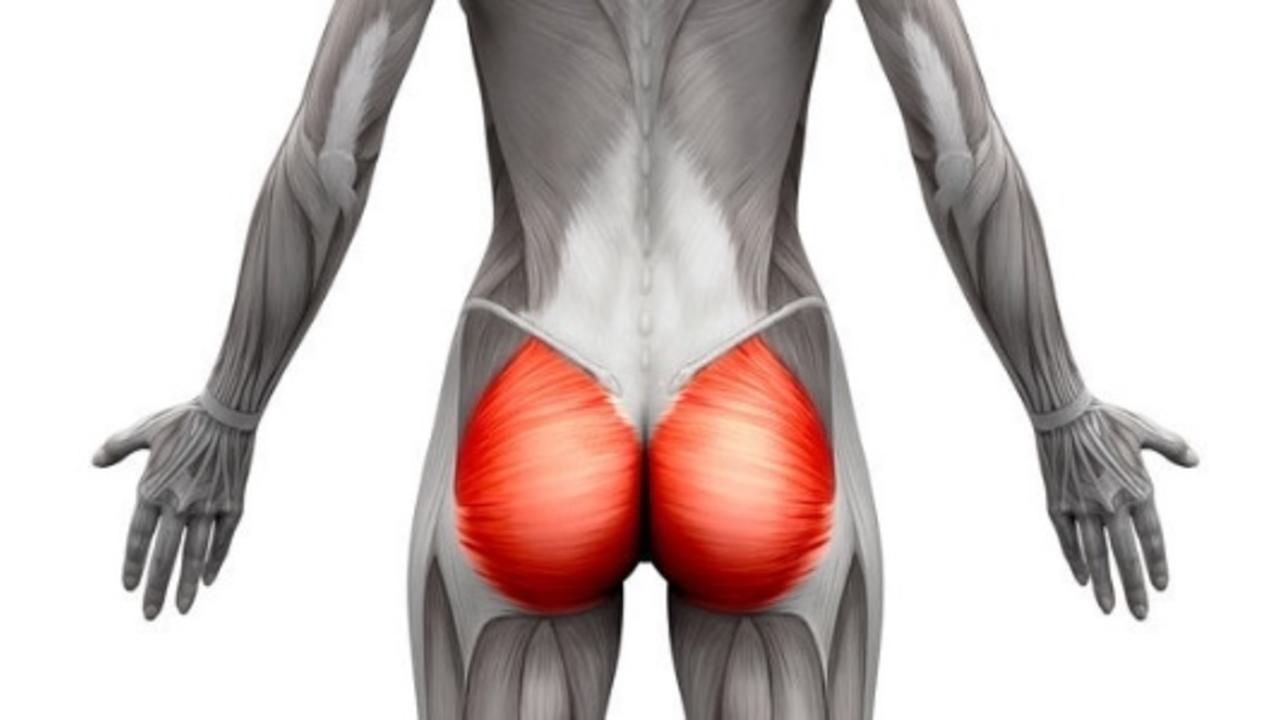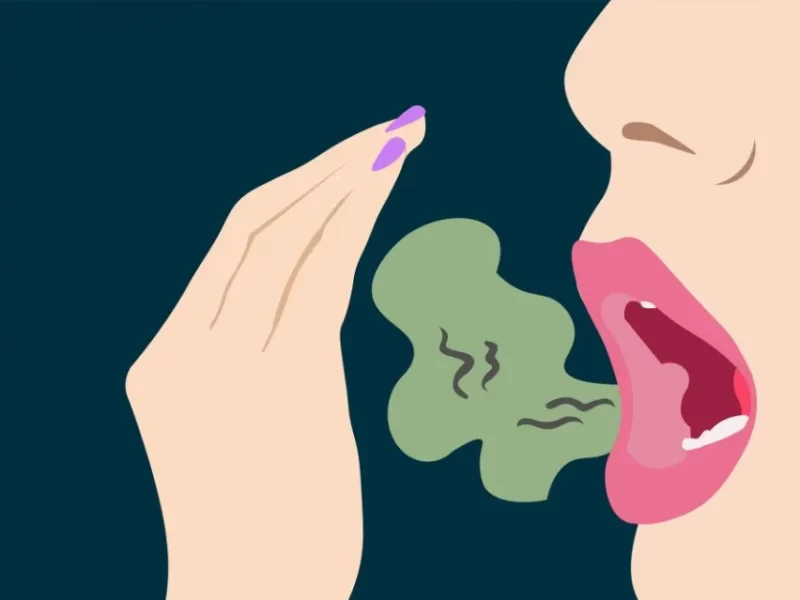Read on and learn the causes, symptoms, treatments, and preventions of glute amnesia.
Glute amnesia also referred to as “dead bum syndrome,” is a condition in which the glute muscles fail to contract properly or “forget” how to contract during exercise.
Although you may have never heard of glute amnesia before, the condition is becoming more widespread as a result of our typically sedentary lifestyles, a problem that has only gotten worse during the coronavirus pandemic.
Related: How Do You Fix a Loose Hip Replacement? (Solved) – Elder VIP
How Long Does It Take To Fix Glute Amnesia?
Your glutes should begin to function properly again in a month with a few glute-focused workouts per week. Having said that, don’t rush and strain yourself excessively trying to fix your glutes. Glute amnesia is transient, so be patient, put in the work, and let your body take care of the rest!
What is Glute Amnesia?
Glute amnesia is typically brought on by prolonged periods of sitting still. This causes weak muscles and tight hip flexors, which results in a condition known as “reciprocal inhibition.”
Reciprocal inhibition occurs when a tight muscle causes length in the opposing muscle. If this happens frequently, it messes up your body’s system for activating your muscles because the neurons and signals that fire your muscles lose their effectiveness.
Right, it’s a little perplexing. In short, your bum muscles may weaken and lengthen if your hip flexors are tight for an extended period of time, which will make it difficult for them to contract when you try to engage them.
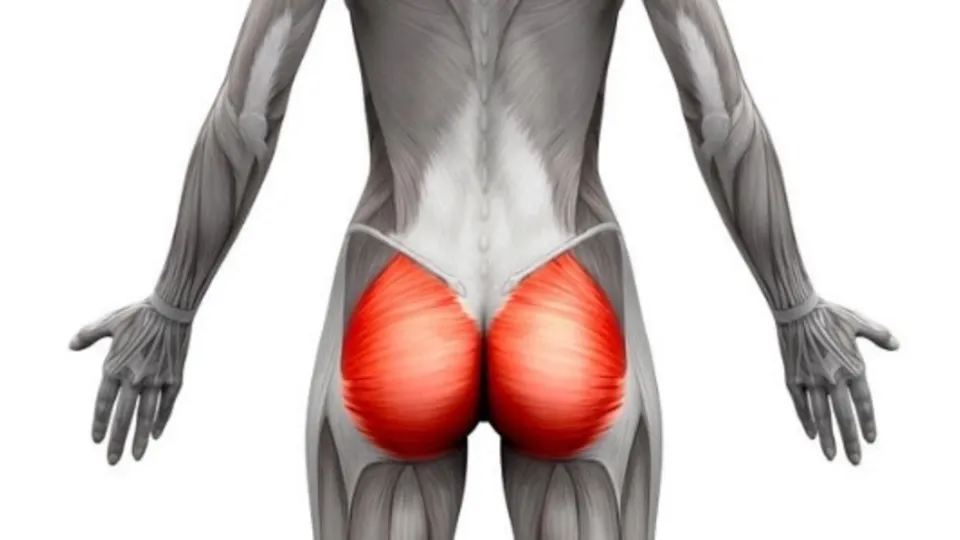
Even some forms of exercise, like running without any other strength training, can result in glute amnesia.
For instance, if you run but don’t usually do any other forms of strength training, you could end up with this condition. If you work a desk job or spend the majority of your non-running time sitting down, your risk of developing this condition is significantly increased.
Symptoms Of Gluteal Amnesia
When you cannot feel your glutes contract when you squeeze them or the contraction feels particularly weak, this is a sure sign of glute amnesia.
There are a few less obvious symptoms to watch out for that can help you identify glute amnesia before it worsens. However, glute amnesia can vary in severity.
Poor Posture and Lower Back Pain
Your glute muscles assist you in maintaining a straight spine and good posture from the bottom up by contracting.
When they fail to contract in the case of “dead butt syndrome,” you’ll lean slightly forward. [Alternately, your back muscles will override your glutes in order to maintain a straight posture, causing tightness and fatigue in your back.
Because the pelvis tilts forward and accentuates the natural curve of the lower back to make up for loose, lengthened glute muscles, lumbar back pain is a common complaint in people with chronic glute amnesia.
Together, these muscular imbalances can cause the dreaded anterior pelvic tilt, which is now becoming more and more prevalent in modern society.
In addition, your knees might cave in and your feet may turn out, or you could have an asymmetrical shift in your weight compensating for inactive glutes.
Tight Hip Flexors
The tightness of the hip flexors is another sign of glute amnesia. Your hip flexors are located at the top of each leg, in front of the pelvis. As the muscle that opposes your glutes, they contract when your glutes release, and the opposite is true.
Your hip flexors contract when you are seated because your legs are bending forward. Your hip flexors may continue to contract after you stand up if this contraction lasts too long, which prevents the glutes from contracting and supporting you.

Other Symptoms
- Numbness or soreness in the bum area when getting up after sitting down for long periods of time
- Loss of strength when lifting weights (having to lift lower weights than usual, for example)
- Stiff hips, knees, and back
- Pain in lower legs
As you can see from the symptoms listed, having glute amnesia can affect your entire body in addition to your glutes and your fitness goals. The glute muscles are one of the most vital muscles in the body, in addition to being crucial in helping you achieve the ideal aesthetic for your derriere.
You’ll notice it when your glutes are temporarily out of commission because they’re involved in everything from lifting heavy objects to climbing stairs. Additionally, when your glutes are MIA, your back, legs, and other muscles must exert twice as much effort to make up for their absent pal!
Therefore, glute amnesia may be to blame if you start to experience pain in your hips, hamstrings, and back.
Causes Of Gluteal Amnesia
Hip flexors can become tight and the gluteal muscles can lengthen as a result of a sedentary lifestyle, which includes too much lying down and sitting still.
Your lower back, pelvis, and front of your thigh are all connected by a muscle group called the hip flexor. When you walk, run, or climb stairs, they’re in charge of moving your legs.
Even taking a brisk walk quickly enough can cause a dead butt syndrome episode if the hip flexors aren’t stretched. Inflammation of the gluteal medius tendons can result from letting your gluteal muscles lengthen and hip flexors become tight.
One of the smaller muscles in the buttocks is the gluteal medius, and the tendons that support it are prone to this kind of damage.
Intriguingly, individuals who engage in a lot of running run a higher risk of gluteal amnesia if they spend an excessive amount of their non-running time sitting at a desk.
For muscles and tendons that spend a lot of time in the same positions, strenuous exercise, such as distance running, can be too taxing. Ballet dancers and other sportspeople are also more vulnerable.
Here are a few causes of why your glutes might eventually stop working.
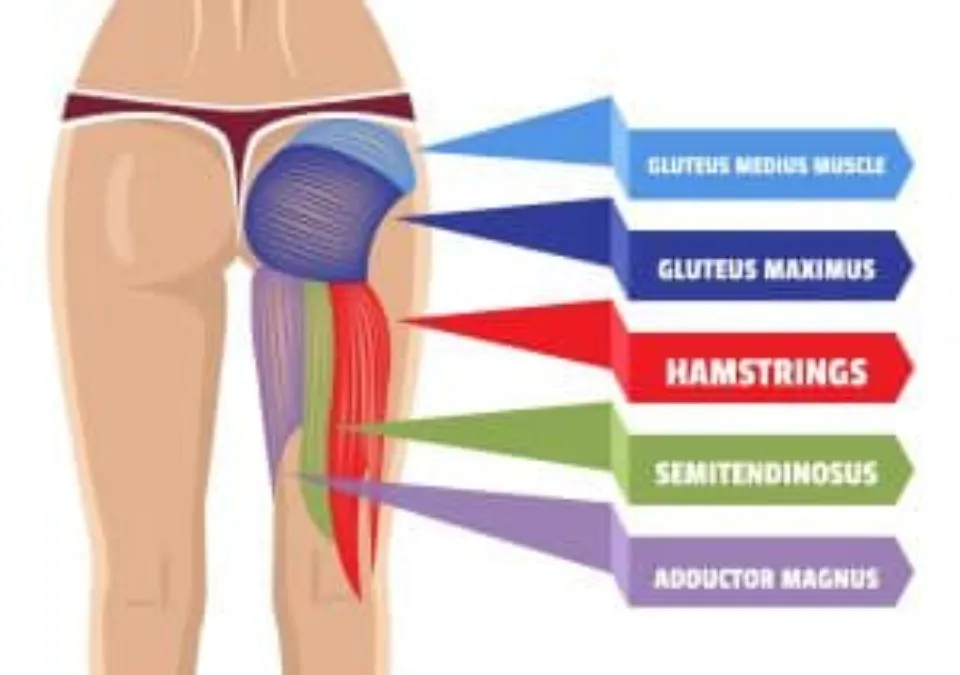
Too Much Sitting
The human body is built for regular movement, so prolonged sitting in a chair can lead to imbalances like glute amnesia. Though experts have long advised getting 30 to 60 minutes of exercise each day, they now argue that this is insufficient for those who spend 8 to 10 hours a day sitting in a chair.
You might be experiencing a problem if you spend eight hours per day in an office and then another hour or more is spent commuting.
According to Katy Bowman, an organ damage scientist and bestselling author of “Move Your DNA: Restore Your Health Through Natural Movement,” you can’t offset 10 hours of stillness with an hour of exercise.
Prolonged sitting causes over-activity of the hip flexors, offsetting the reciprocal relationship between the hip flexors and glutes.
In other words, too much contraction of the hip flexors through sitting “turns off” the glutes so that the muscles can’t fire when you stand up or exercise. Additionally, sitting in a chair for an extended period of time causes your glutes to lose their elasticity and ability to contract properly.
Not Enough Glute Exercises Or Incorrect Form in a Workout Program
There are a few additional causes of gluteal amnesia in addition to the most typical one, which is prolonged static sitting. These causes also involve muscle imbalances, which can happen when certain muscles are overworked without their opposing muscles being balanced.
You risk having strong quads that overcompensate for weak glutes if you regularly perform quadriceps-supporting strength training exercises without balancing them out with glute-strengthening exercises.
Does Posture and Desk Setup Matter?
More people than ever before are working remotely, especially in the wake of a global pandemic. Additionally, a growing number of people spend a significant portion of their days sitting down to work on computers due to the ever-expanding digital world.
In a study by Daneshmandi et al. (3), it was discovered that the study subjects, who were office workers, spent 6.29 hours sitting during their 8-hour work day shift.

Health outcomes over time revealed that 6.3% of participants had high blood pressure and high cholesterol, and that half of the participants were uncomfortable with their workstations. Additionally, ¾ of the participants reported feeling exhausted throughout the day, and ½ of the participants reported neck, back, and shoulder pain after their workday.
To put it mildly, sitting for extended periods of time can cause significant musculoskeletal changes.
Does Age Matter?
It seems that anyone, regardless of age, may be susceptible to these metabolic and musculoskeletal changes brought on by extended periods of sitting. Community-dwelling older adults (ages 65-84) were examined in one study by Reid et al. The amount of time spent sitting throughout the day was linked to higher blood levels of inflammatory markers, body fat, and both a lower and higher percentage of lean mass.
Yoo et al. (1) conducted a study looking at students and younger people. It was discovered that increased smartphone use was connected linearly to lower levels of general fitness and physical activity, as well as higher levels of body fat percentage.
How to Test for Glute Amnesia: Is Your Butt Firing?
Testing for glute amnesia doesn’t involve any difficult procedures. In actuality, the question is straightforward: Do your glutes contract when they ought to? You can perform any exercise where your glutes should be working to see if they are firing or if another muscle is doing the work in their place.
One-legged glute bridges are a good exercise to check for glute amnesia. When performing the exercise, check to see if your glute is firing or if another muscle—such as your hamstrings or low back—is doing the work instead.
It’s likely that you have glute amnesia if you experience fatigue in a muscle other than your glute.
Treating Gluteal Amnesia
The best course of action for dead butt syndrome will depend on how far it has advanced and what your physical activity objectives are.
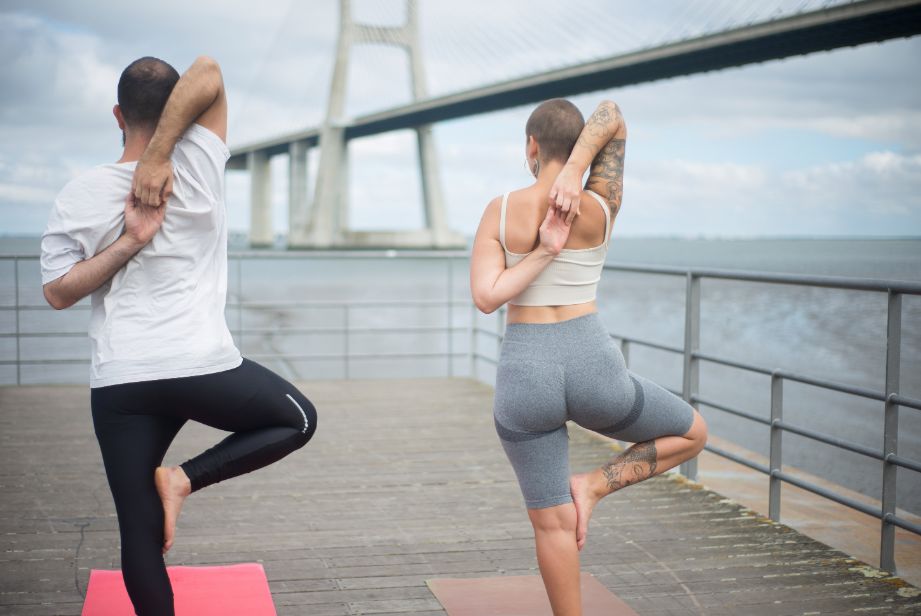
Working closely with a sports medicine expert will help you return to action safely if you’re a runner trying to get back on track as quickly as possible.
The typical treatment for most people, including runners and other athletes, entails taking a break from your exercise or sporting routine. The RICE protocol will likely be recommended to you as well:
- Rest: staying off your feet as much as possible
- Ice: reducing pain and swelling with an ice pack or cold compress
- Compression: wrapping a sore knee or back may be advisable, but consult your doctor for specific instructions
- Elevation: keeping your leg or legs up and well-supported
Massage and physical therapy may be required in extreme circumstances. Home workouts for flexibility and strength may be a component of physical therapy.
Platelet-rich plasma (PRP) therapy or a comparable procedure might be necessary if there has been a serious injury to the tendons and muscles.
Invest in a Standing Desk
Talking to your employer about a standing desk is a great idea if you work in an office or are currently working from home. Standing desks let you work while taking a break from sitting down and help your muscles and joints by taking some of the stress off of them. We don’t want to stand or sit still all day, so make sure you switch between them frequently.
Do you ever catch yourself staring at the computer screen for extended periods of time? An achy back and sagging shoulders Our Posture [P]Rehab Program will give you the tools you need to master your own posture, learn the truth about posture, and feel fantastic at work.
Best Exercises For Fixing Glute Amnesia
TIP: To fully engage your gluteus maximus, the most significant of your three glute muscles, and to wake up your sleepy bum, always push through the heel of your foot rather than the ball of your foot when performing the exercises below.
Glute Bridge
An easy, low-impact exercise move that works your sleepy glute muscles is the glute bridge. To prevent your feet from slipping during the movement, use an exercise mat and exercise socks or shoes.
- Laying on your back with your feet flat on the ground and your hands by your sides with either the palms facing up or down depending on how comfortable it is for you to do so is a good place to start.
- Try to reach your palms just past the back of your heels to check that your legs are properly positioned. You should be able to do this. If your heels aren’t touching the ground, move your feet.
- Lift your lower body gradually upwards without arching your back. Your lower body should be raised with your lower legs perfectly in line with your ankles, and your lower back should be pressed into the mat to engage your core.
- When you come down, lightly graze the mat with your body as you descend. To perform as many repetitions as you find comfortable, slowly lower and raise your lower body: begin with 20 and work your way up.
Lunge
A great way to activate the glute muscles is to perform lunges; just make sure you squeeze your glutes as hard as you can without losing your balance while doing so.
- Start by extending one foot about two or three feet in front of the other.
- Take a pair of weights that are appropriate for your level of fitness. (You can leave the weights if you’re a beginner, or if you haven’t exercised in a long time)
- By bending both knees and distributing your weight evenly across both feet, you can lower your body halfway to the ground. Maintain a straight spine and an upward gaze.
- Avoid attempting to move quickly and instead focus on controlling the motion to feel your glutes, quads, and hamstrings really get a workout.
- On each side, try to perform the exercise 5–10 times.
Preventing Glute Amnesia

We’ve talked about how exercising with proper form and ensuring that your mind-muscle connection to your glutes is strong are two key ways to prevent and treat glute amnesia.
Here are two additional straightforward ways to stop your butt from nodding off in the future, though.
Get Active and Move More!
Many people find themselves spending a lot of time at their computer desks in today’s technologically advanced culture and workplace. People used to be more active, but technology now accomplishes so much of the work for us.
Even people who regularly exercise can develop gluteal amnesia if they spend most of their days in a chair or a car. People with desk jobs who don’t frequently take breaks, commercial drivers, and those who have long daily commutes are those who are most at risk.
Above all, it’s crucial to regularly take breaks from your chair and exercise your glutes. To get the muscles working, you could walk, squat, or even squeeze your buttocks together.
You might also try sitting on an exercise ball or working occasionally at a high countertop to cut down on the amount of time you spend sitting in a chair. Another option worth thinking about is a standing desk.
Balance Your Strength Training Workouts
Athletes and individuals who strength train are two more vulnerable populations in addition to those who spend too much time sitting down. The quadriceps will overcompensate for weak glutes and hamstrings if you overtrain your front legs while neglecting to strengthen your back legs, which can cause glute amnesia.
The front of your thighs’ quadriceps, which are strengthened by performing exercises that isolate them, are particularly important for preventing glute amnesia.
Exercises that work the backs of your legs should always be done in addition to exercises that target the quads, such as leg presses and extensions.
How to Build Your Glutes While Walking?
Long strides, heel-toe walking, and lunges help you develop a better butt off the beaten path. You can strengthen the gluteal muscles while getting fit all over by gradually introducing new elements into your regular walking routine, such as stepping up the treadmill’s incline and incorporating some tush-targeting exercises.
Step 1
Spend 5–10 minutes warming up. Include walking lunges on the trail after your warm-up. Increase the length of your stride and lunge forward with your right foot. Step forward with your right foot, keeping it pointed in that direction. Bend your left knee at 90 degrees and your right knee at 90 degrees, trailing behind you.
Step the left foot forward into a lunge and come out of it with a long stride. On each side, repeat this process five times. Start with dips if you’ve never worked out before, then progress to deeper 90-degree lunges. If you’re already in shape, extend the lunge and bring your knee to the floor.
Step 2
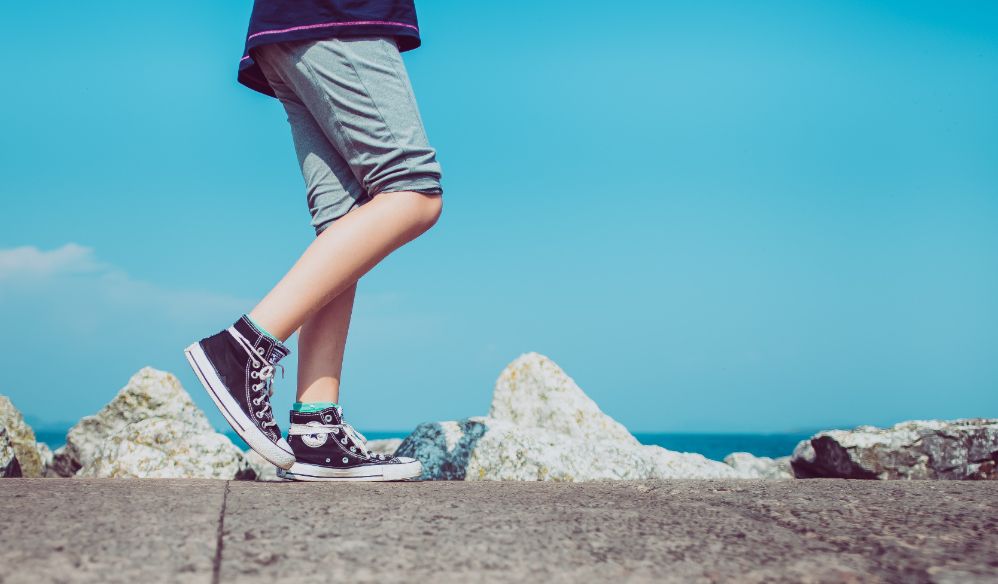
Cardio exercises that you can do while moving should focus on your glutes. If you walk indoors on a treadmill, turn the incline up; if you walk outside, find some hills or stairs. To really develop power in your tush while walking on a treadmill, you must slow down and raise the incline.
Step 3
With each step, roll your foot from the heel to the toe to engage your glutes. Take a step forward, land on your heel, and with a “sweeping” action, push through to the ball of your foot. Squeeze together your butt cheeks as soon as you touch the ground. Release the squeeze and advance by pushing off the ball of your foot. Aim for 100 “sweep and squeeze” steps during your walk.
Final Thoughts
In order to avoid chronic pain and postural dysfunctions in the future, it’s important to avoid glute amnesia if you spend a lot of time sitting at a desk or on a long commute. In order to correct the issue, perform glute exercises with the proper form if you have any degree of glute amnesia.
You might not need anything more than periodic breaks from sitting that activate your glutes to stop glute amnesia in the future. Now, stand up and do the exercise mentioned above to activate your glutes!

